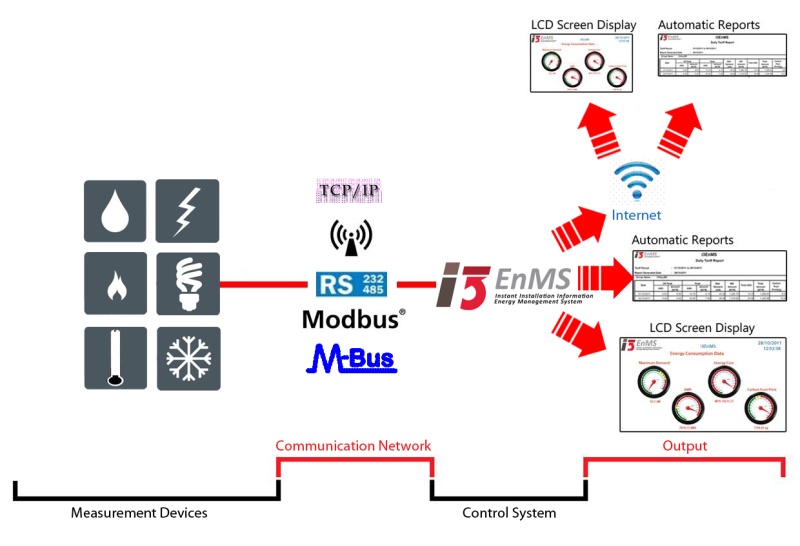Components of an Energy Management System
Energy Management Systems are made of several equally important components. It is important to understand the functions and requirements for each component so that a successful EnMS can be deployed.
The following details each component's role in an effective Energy Management System:
| i. | Measurement Devices - the foundation on which an effective Energy Management System is built upon. These devices measure a wide array of “Installation Parameters”; such as Electrical Energy, Water Consumption, Temperature, Humidity, Gas Consumption, Compressed Dry Air, etc. The measurements enable a "sub-metering" to determine the individual consumption of various resource consumption points or cost centers. |
| ii. | Communications Network - the bricks in an Energy Management System, thru which measurement data from the “Measurement Devices” are sent to the “Control System”. Typically wired RS485 communication are used but increasingly TCP/IP, WiFi, RF & GSM are used... |
| iii. | Control System - the mortar that binds the entire Energy Management System together, which enables measurements from “Measurement Devices” to be monitored, recorded, analyzed & reports generated. It also provides a centralized overview and control of the whole installation, so that it can be efficiently monitored, managed and maintained. |
EnMS System Architecture


 Malaysia
Malaysia